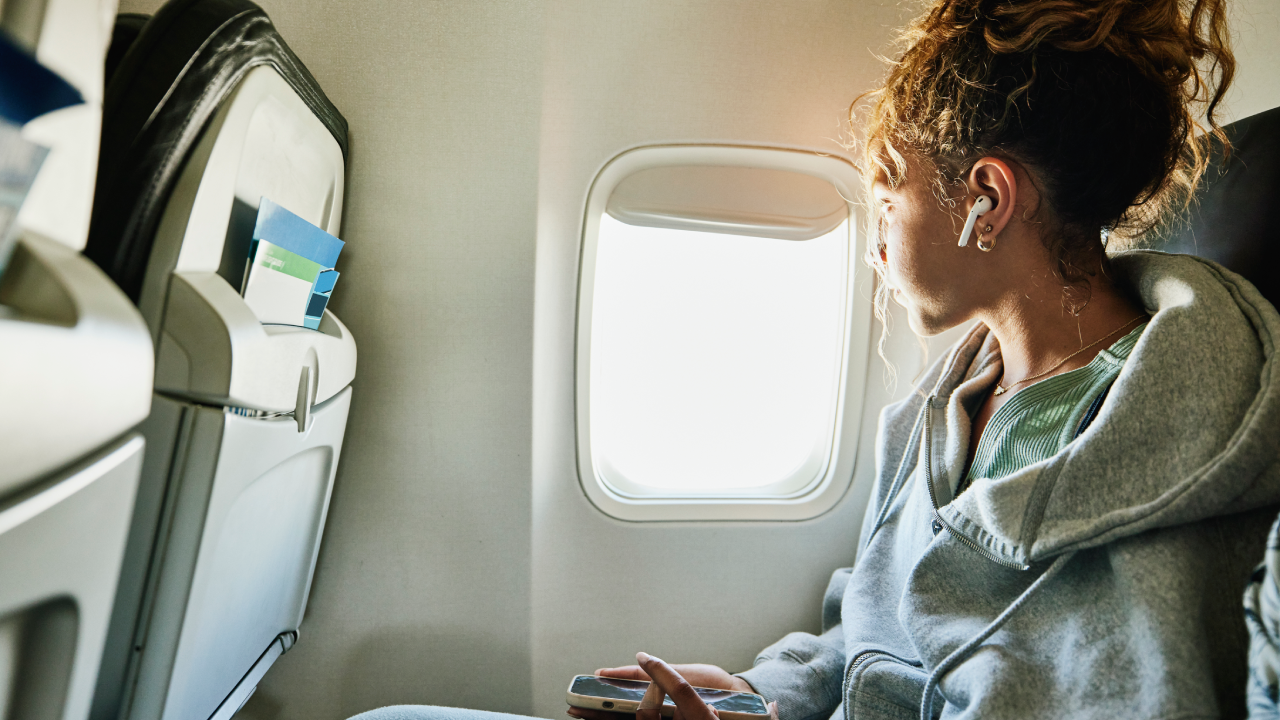How to choose an airline card

The Bankrate promise
At Bankrate we strive to help you make smarter financial decisions. While we adhere to strict , this post may contain references to products from our partners. Here's an explanation for . The content on this page is accurate as of the posting date; however, some of the offers mentioned may have expired. Terms apply to the offers listed on this page. Any opinions, analyses, reviews or recommendations expressed in this article are those of the author’s alone, and have not been reviewed, approved or otherwise endorsed by any card issuer.
Key takeaways
- An airline credit card isn’t for every traveler and you should carefully consider what you want from a credit card.
- Choose an airline credit card that comes with perks you can use from an airline that you plan to or already fly frequently.
- You shouldn’t get an airline credit card if you’re not a frequent flyer or don’t have a preferred airline.
It’s easy to be lured in by attractive sign-up bonuses from every card on the market, especially airline credit cards that are marketed to you when you’re already on a plane. However, choosing the right airline credit card can be an important step in building a well-rounded credit card strategy.
How to compare airline credit cards
It’s always best to look at a credit card from several angles before rushing to apply. Keep the following tips in mind when deciding which airline credit card is best for you.
Think about where you fly most
Start by thinking about the places you travel to most frequently for work or vacations, as well as the destinations you’d like to visit in the future. Then, ask yourself which airlines you’d prefer to fly with, including those that are alliance partners of other airlines. For example, if you’d like to visit Doha on Qatar Airways, you may want to look for cards that earn American Airlines AAdvantage miles that can be redeemed for flights on Qatar.
Yet, just as important as where you plan to fly to is where you’ll be flying from. Is there a large airport near you that an airline operates out of as a main hub?
For example, if San Francisco International Airport (SFO) is your closest major airport, you might consider a United Airlines credit card. If you live near Miami International Airport (MIA) or Dallas-Fort Worth (DFW), you might consider an American Airlines credit card. And lastly, if you live in Atlanta where Delta Air Lines is king, you’ll more than likely want a Delta credit card.
Once you know which airlines and partners service the airport you fly from, as well as the airports you plan to fly to, you can determine which card will be best for your current and future travel goals. The next step in deciding on an airline credit card is to learn how far those hard-earned miles can take you.
Understand what your miles are worth
The value of airline miles, as with any rewards currency, comes down to how much each mile is worth in cents. For example, you may only be able to achieve a valuation of 1 cent per mile on some airlines, but you can get closer to 2 cents per mile with others.
At a high level, it’s easy to calculate the value of your miles for a particular redemption. Let’s say a one-way flight you want to take costs $600, but you can also redeem that same flight for 25,000 miles. In order to see how much your miles are worth in this scenario, divide 600 by 25,000 (600/25,000 = 0.024), and then multiply that answer by 100 (0.024 x 100 = 2.40). In this case, the value of this particular redemption would be 2.4 cents per point, which is a higher-than-average redemption, but not impossible to achieve.
Keeping in mind that not all miles are created equal, try not to be distracted by an airline credit card that has a large sign-up bonus but low earning rates or a high annual fee. It’s also important to try to compare apples to apples. Take the $600 flight example. If you didn’t have the points, would you still take the trip? If not, the calculation described above won’t produce a fair estimation of your points’ value.
Next up is the credit card’s perks: what does a card’s annual fee actually get you?
Consider which perks matter most to you
Most airline credit cards come with common perks such as a free first checked bag, discounted in-flight purchases and elevated earning rates when spending with that particular airline. But some premium airline credit cards also come with lounge access and put you closer to elite status.
Before choosing which airline card to get, consider which common cards perks matter most to you. If you don’t care for airline lounge access, for instance, or you already get lounge access from another card, there’s no need to get another card that gives you that.
One such card that offers coveted airline lounge access while also getting you closer to elite status is the Delta SkyMiles® Reserve American Express Card. For a $650 annual fee, the perks of the Delta Reserve include 15 complimentary Delta SkyClub visits per year for the primary cardholder, complimentary Centurion Lounge access when booking a Delta flight with the card, complimentary upgrades and an increased 3X miles on every dollar spent on Delta purchases.
By comparison, Southwest Airlines offers a suite of credit cards, the most basic of which — Southwest Rapid Rewards® Plus Credit Card — comes with two EarlyBird Check-In boarding upgrades, when available, among other perks. Because upgraded boardings normally cost $30 per segment, per passenger, these upgrades nearly offset the card’s $69 annual fee.
While each airline has its pros and cons, what’s clear is that, when comparing airline card perks, you have to weigh the value of what each card offers in return for its annual fee.
Know what airline status is worth to you
When you choose an airline credit card, you’re essentially choosing your airline loyalty as well because you’ll be earning miles — and possibly status — with that airline.
If airline elite status is important to you, holding an airline credit card can be one of the easiest ways to get closer to that goal. All four major airline carriers in the United States — American Airlines, Delta Air Lines, United Airlines and Southwest Airlines — have a credit card option that helps you earn status through spending.
Status tiers, names, perks and requirements vary across airlines. One example is United Airlines MileagePlus which requires you to earn a certain number of Premier Qualifying Flights (PQFs) and/or Premier Qualifying Points (PQPs) to earn elite status. Holding select United Airlines co-branded credit cards allows you to earn 500 PQPs for every $12,000 you spend on the card each calendar year, putting you closer to the 12 PQFs and 4,000 PCPs or the 5,000 PQPs you need to qualify for Premier Silver status. Flyers with this status enjoy elevated earning rates, complimentary Economy Plus at check-in and more.
Is an airline credit card right for you?
With all of these factors in mind, consider the following scenarios where it does and doesn’t make sense to choose an airline card.
When to choose an airline credit card
An airline card might be right for you:
- If you’re a fairly frequent flyer with a particular airline or partner alliance
- If you want to access perks like priority boarding or an expedited path to earning status
- If you regularly incur airline fees
With regard to incidental fees, consider that checking a bag can start at $30 per one-way flight. If you fly at least three segments a year, you’ll easily offset the annual fee of most lower-tier airline credit cards.
Also, keep in mind that you’ll generally need to have a good to excellent credit score to get approved for an airline credit card. If your score is below this range, you may still be able to qualify for a travel card for borrowers with bad to fair credit.
When to skip airline credit cards
Beyond credit score considerations, there are several circumstances where avoiding airline cards is warranted:
- If you only fly once or twice a year
- If you don’t have a preferred airline
- If you don’t want to be locked into a single airline or partner alliance
- If you are a true air warrior who already earns plenty of miles, status and perks with your trips
In these cases, you’re likely to get more value from a general travel credit card or one that earns transferable points that can be moved to other airlines and travel partners.
The bottom line
Unlike general travel rewards cards, airline credit cards’ perks are typically tied to specific airlines and their partner alliances. To a certain extent, this makes your decision easy: Will you get enough value from the individual airline’s perks to justify the card’s fees?
If the answer is yes, you can begin a deeper analysis to determine which airline cards are best suited to your location, target destinations and preferred perks. Once you’ve made your decision, revisit your card choices on a regular basis to ensure any personal or program changes haven’t impacted your calculations.
Related Articles



